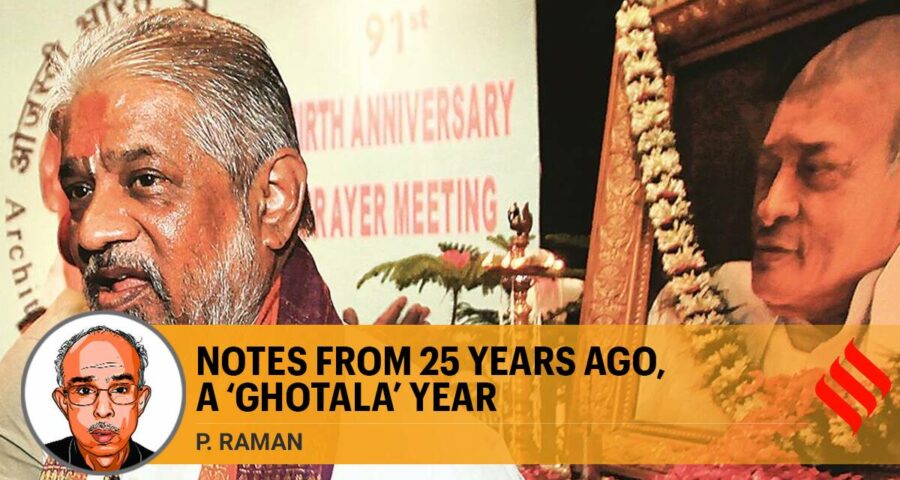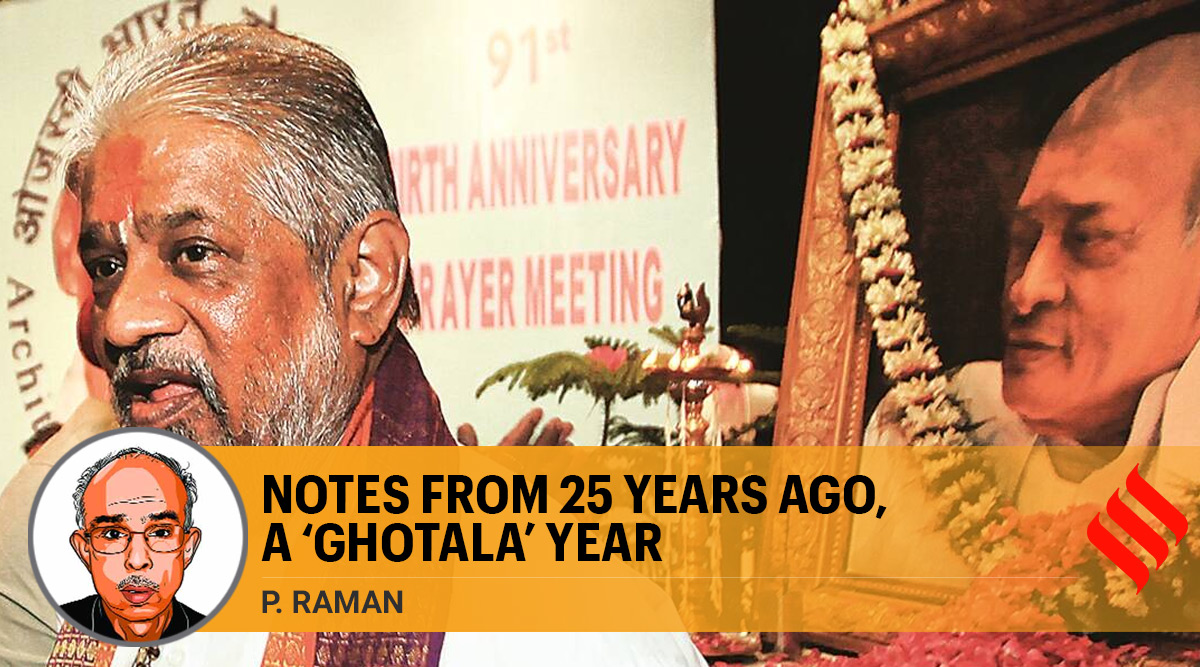The year 1995-96 was the Republic’s year of ghotalas. Coinciding with P V Narasimha Rao’s last year in office, the period saw a number of scams and dubious deals.
THE YEAR 1995-96 was the Republic’s year of ghotalas. Coinciding with P V Narasimha Rao’s last year in office, the period saw a number of scams and dubious deals: the sugar import scam which led to food minister Kalpnath Rai’s resignation (November 1995), the telecom scandal that prompted the ouster of minister Sukh Ram (Dece- mber 1995), godman Chandraswami’s revelations (September 1995), the Jain Hawala chargesheet (January 1996), the Rs 3 crore hawala charge against Rao (January 1996), and the bribery charge against JMM MP Suraj Mandal. However, after Rao’s defeat, most of these cases lost political relevance.
On January 16, 1996, in a defining moment for the Indian political class, the CBI chargesheeted L K Advani, Arjun Singh, Yashwant Sinha, Devi Lal and Arif Mohammad Khan (now Kerala Governor) in the infamous hawala bribery case. The agency also sought sanction to prosecute then Union ministers Balram Jakhar, V C Shukla and Madhavrao Scindia. Advani resigned as MP the same day. A Rs 53.3 crore scam involving three dozen politicians of all shades — except the Left — was exposed. Western agencies put the figure at $18 million. On February11, more people were charge-sheeted. There was no actionable evidence against 23 others.
Parliament was not in session the day the CBI filed the chargesheet. After a parliamentary panel meeting, veteran politician Somnath Chatterjee told us: “I am both happy and sad. Happy because finally the guilty have been brought to book. Sad because for five years the establishment avoided action against the country’s high and mighty. Finally, the Supreme Court had to act on a PIL.” Chatterjee was right.
But just when the investigation into India’s biggest political bribery scandal seemed to be making a breakthrough, the caged parrot was stifled and officers transferred. There was a conspiracy of silence. No one wanted to expose the Jain brothers — S K Jain, N K Jain and B R Jain — because they knew too much about the cloak-and-dagger operation. They double-crossed the intelligence establishment and their foreign contacts while allegedly using the funds to bribe Indian politicians for personal gains.
The investigators had got their first clue in 1991 when they had seized a diary from a Kashmiri terrorist. Further raids yielded one more diary and two notebooks from the Jain brothers. These contained initials of politicians to whom payments were allegedly made between 1988 and 1991. Arif Mohammed Khan topped the list as per conclusions made from the diaries. with Rs 7.5 crore, followed by Arjun Singh (Rs 10 lakh), Devi Lal (Rs 50 lakh), Yashwant Sinha (Rs 21 lakh), L K Advani (Rs 60 lakh), Madhavrao Scindia (Rs 75 lakh), V C Shukla (Rs 65.8 lakh) and Balram Jakhar (Rs 61 lakh). The initials were also alleged to refer to Rajiv Gandhi, Giani Zail Singh, Bhajan Lal, N D Tiwari and Pranab Mukherjee. On January 23, 1996, Atal Bihari Vajpayee alleged that Narasimha Rao was also paid Rs 3 crore hawala money.
The politicians tried to wriggle out by claiming that the initials in the diary were wrongly interpreted. But on January 18, 1996, Sharad Yadav broke ranks to admit that he took Rs 3 lakh from the Jains in the presence of Congress leader Chimanbhai Patel, but did not help the Jains. Four days later, he resigned from the Lok Sabha. Other names in the diary were said to be R K Dhawan, Kamal Nath, Arvind Netam and
S R Bommai. After protracted litigations, the Delhi High Court let off the politicians on the premise that the diary’s notings were ‘not admissible evidence’. Many were acquitted in 1997. On March 2, 1998, the Supreme Court reversed the Delhi High Court’s verdict but let off charge-sheeted Advani and V C Shukla as the prosecution failed to present corroborative evidence.
The Chandraswami phenomenon was the other murky facet of the ghotala year. No godman had ever exerted such a vice-like hold on South Block. PM Rao removed his internal security minister Rajesh Pilot on September 13, 1995, hours after the latter ordered a CBI inquiry against the godman. On October 8, Chandraswami appeared before the Jain Commission inquiring into Rajiv Gandhi’s assassination, and said that he had asked the PM to withdraw cases against underworld don Bablu Srivastava and Blitz editor R K Karanjia.
He told the officials that he had presented a precious neelam-studded gold ring to then chief election commissioner T N Seshan as ‘a mark of blessing.’ On April 3, 1996, the Supreme Court admonished the CBI for the tardy investigation into cases against the godman. On May 3, he was sent to Tihar Jail in connection with the ‘NRI duping case’. On May 27, 2017, Nemichand Jain alias Chandraswami died in obscurity.
The third ‘ghotala’ pertained to the mysterious airdropping of several caches of AK-47 and other ammunition in Purulia on December 17, 1995, from an AN-26 plane. The aircraft was intercepted two days later and the five crew members — all Latvians — were rounded up. Investigations revealed that two days before the airdropping, the plane was intercepted between Bombay and Madras, and had refuelled at Varanasi airport on the day of the incident. The whole episode revealed a serious security breach, but who plotted the airdrop and what were the arms for? Initially, investigators concentrated on the controversial Ananda Marga group. Later Kim Davy, one of the crew members, claimed the R&AW knew about the airdropping, and that the arms were meant to help elements opposed to the Left government in West Bengal to create disquiet and pave the way for President’s rule.
Years later, all five crew members were freed under diplomatic pressure from Russia.
This article first appeared in the print edition on January 17, 2021, under the title “Notes from 25 years ago, a ‘ghotala’ year”. P Raman is a senior journalist and author of Post-Truth Media.
Source: Read Full Article


